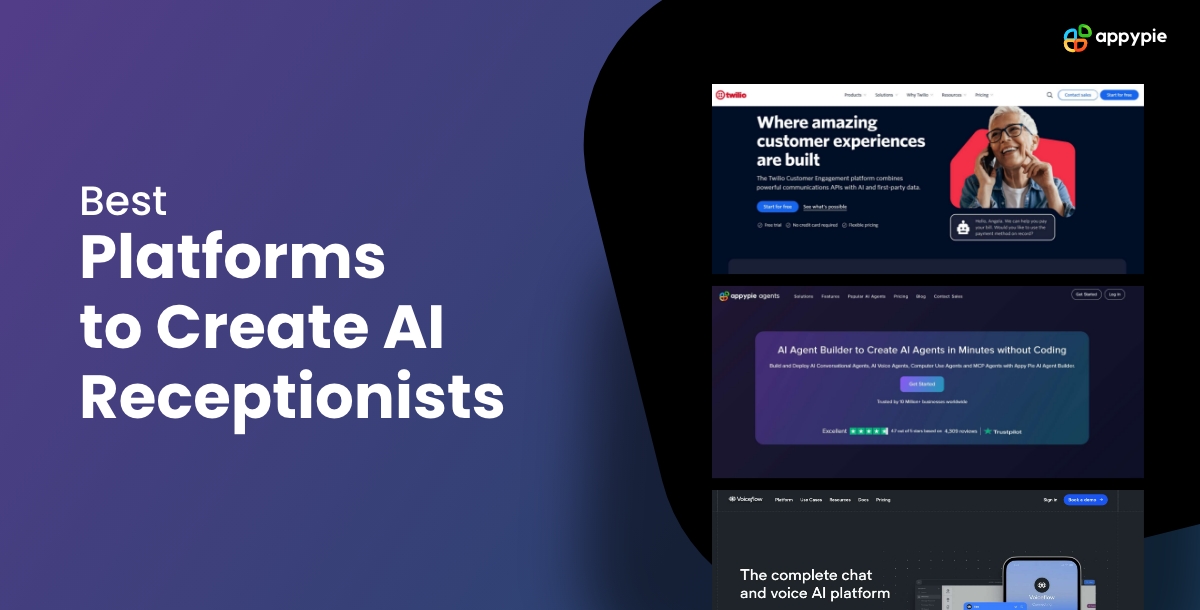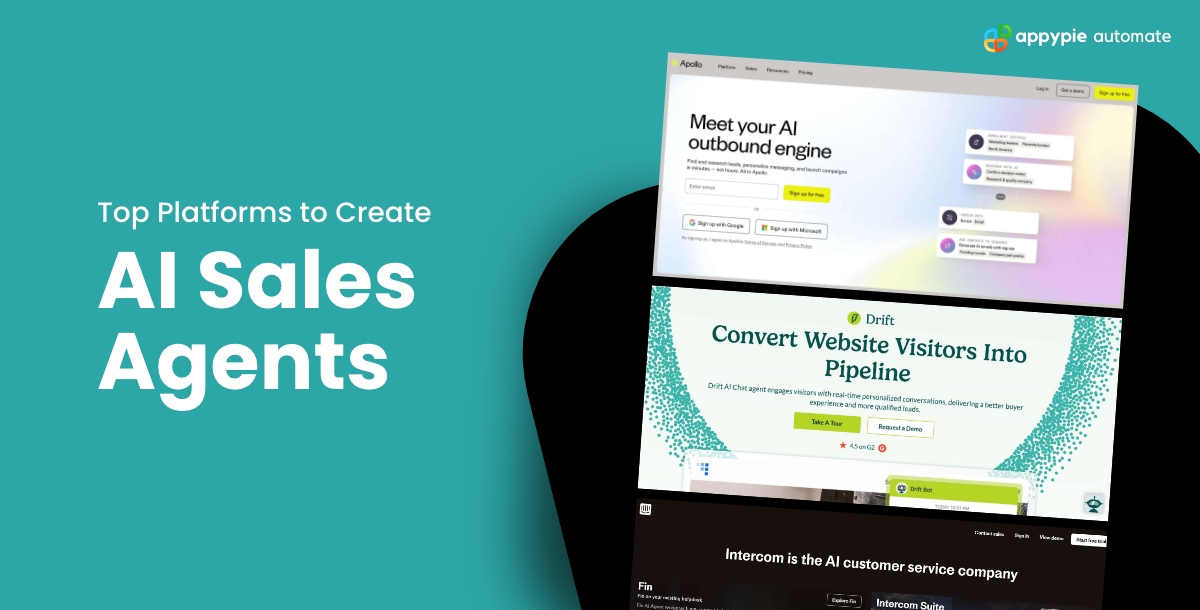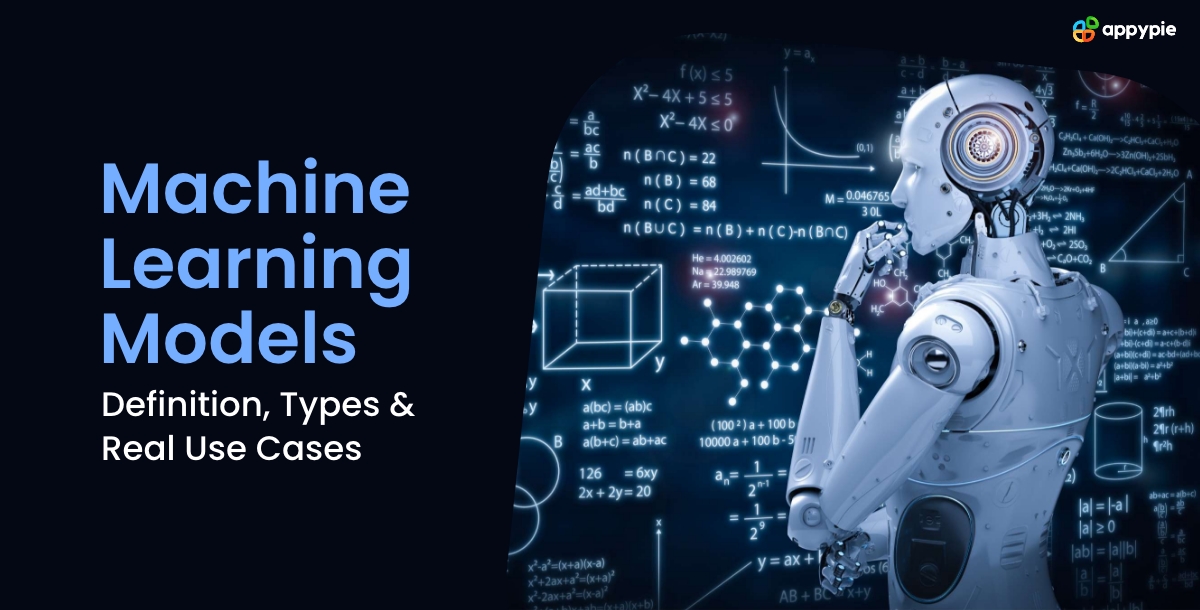7 Best Platforms to Create AI Loan Recovery Agents

What Are AI Loan Recovery Agents? Financial institutions across the world are transforming the way they manage collections and customer communication — and artificial intelligence is at the center of this change. Instead of relying entirely on large human call centers or manual follow-ups, banks and lending companies are adopting AI loan recovery agents — intelligent digital systems designed to handle debt recovery, repayment reminders, and borrower engagement automatically through ch [...]
7 Best Platforms to Create AI Debt Recovery Agents

What Are AI Debt Recovery Agents? The debt collection process has always been one of the most complex and time-consuming aspects of financial management. It involves sending reminders, following up on overdue accounts, negotiating payment terms, and ensuring compliance with legal and ethical standards. Traditionally, these tasks required large teams of agents making hundreds of calls or sending countless emails daily. However, with advancements in artificial intelligence, a new class of d [...]
7 Best Platforms to Create AI Customer Support Agents

What Are AI Customer Support Agents? Customer service is evolving rapidly, and artificial intelligence is leading that transformation. Today’s businesses no longer rely solely on human representatives to handle inquiries, process feedback, or resolve technical issues. Instead, they’re adopting intelligent digital assistants known as AI customer support agents — systems designed to communicate naturally with users through chat or voice. These agents replicate many of the tasks [...]
7 Best Platforms to Create AI Resume Screening Agents

What Are AI Resume Screening Agents? The hiring process is evolving fast, and artificial intelligence is changing how companies find and select top talent. An AI resume screening agent is a digital assistant that uses AI to scan, evaluate, and rank resumes automatically — saving recruiters hours of manual work. Instead of manually reading hundreds of resumes, businesses can now rely on intelligent systems that instantly identify qualified candidates based on keywords, skills, and [...]
7 Best Platforms to Create AI Insurance Agents

What Are AI Insurance Agents? The insurance industry is transforming rapidly, driven by technology that makes customer service faster, smarter, and more reliable. At the center of this transformation are AI insurance agents — digital systems that use artificial intelligence to interact with customers, assist with policies, and simplify complex processes. Instead of waiting on hold or navigating confusing paperwork, customers can now engage with virtual systems that respond instantl [...]
7 Best Platforms to Create AI Real Estate Agents

What Are AI Real Estate Agents? The real estate industry is undergoing a digital revolution, and artificial intelligence is at the forefront. An AI real estate agent is an intelligent assistant that interacts with clients via chat or voice, providing instant access to property information, availability, and pricing. These systems help streamline communication between buyers, sellers, and agents — making property exploration simpler and faster. Whether assisting through a chat win [...]
7 Best Platforms to Create AI Recruiters

What Are AI Recruiters? Recruiting has evolved far beyond scanning piles of résumés and making endless calls. Today, organizations rely on intelligent systems that can find, screen, and engage top candidates automatically. An AI recruiter is a digital assistant powered by artificial intelligence that mimics how human recruiters operate — identifying talent, analyzing qualifications, and communicating with candidates throughout the hiring process. These systems combine automatio [...]
7 Best Platforms to Create AI Travel Agents

What Are AI Travel Agents? The travel industry is evolving fast, and automation now plays a central role in how travelers plan and book their journeys. An AI travel agent is a digital system powered by artificial intelligence that assists users in planning trips, finding flights or hotels, comparing prices, and managing itineraries — all through natural, human-like conversation. In simpler terms, it’s an intelligent travel companion that understands language, interprets intent, [...]
7 Best Platforms to Create AI SDR Agents

What Are AI SDR Agents? Sales teams today face one major challenge — scaling meaningful conversations without burning out their human reps. That’s where AI SDR agents come in. An AI SDR agent acts like a digital sales development representative. It reaches out to prospects, qualifies leads, follows up, books meetings, and even syncs notes to your CRM — all automatically. These agents combine natural language understanding, automation, and context awareness to create personali [...]
7 Best Platforms to Create AI Receptionists

What are AI Receptionists? Modern teams want round-the-clock coverage without grinding their staff. That’s where an AI receptionist shines—routing inquiries, qualifying leads, and booking appointments while keeping the human team focused on high-value conversations. You’ll free up agents for complex cases, shorten average response times, and maintain consistent tone across touchpoints. As you standardize intake, you also generate clean data for continuous improvement and training. Ge [...]
Top 7 Platforms to Create AI Sales Agents

What are AI Sales Agents? AI sales agents are intelligent assistants that automate lead capture, qualify prospects, and handle routine conversations so sales agents can focus on closing deals. They analyze intent, personalize outreach, and keep pipelines warm across channels. Beyond a typical sales chatbot or sales bot, these systems act like proactive teammates, guiding buyers, booking meetings, and syncing with CRMs. As organizations scale globally, an AI sales agents reduce costs, shorten [...]
How to Chat with Gmail Using MCP Agent?

What is MCP Agent for Gmail? MCP Agent for Gmail is a Model Context Protocol server that connects AI tools directly to Gmail. It acts as a middleware that translates natural language commands from AI assistants into Gmail API calls. With the help of MCP, this agent enables users to read, search, compose, and manage emails simply by chatting with an AI-powered assistant. Its standardized protocol ensures compatibility across multiple AI applications and clients, providing a seamless Gmail auto [...]
Best No-Code AI Agent Builders in 2025

What Is a No-Code AI Agent Builder? A no-code AI agent builder is a visual platform that allows users to create intelligent software agents without writing code. These tools enable the development of task-driven, decision-making, or conversational agents through drag-and-drop interfaces or natural language prompts. No-code AI agent builders streamline the process of designing AI-powered workflows, chatbots, assistants, and automation systems. By abstracting complex backend functions, they allo [...]
How to create an AI voice agent?

What Is an AI Voice Agent and Why Should You Build One? An AI voice agent is an intelligent, speech-powered system that uses STT, NLU, and TTS to engage users in real-time, human-like conversations over phone or web channels. These agents help businesses scale support, sales, and engagement using natural, context-aware dialogue. Delivers real-time conversations – AI voice agents convert spoken language into text and back into speech using advanced STT and TTS models powered by tools li [...]
10 Best Computer Use Agents in 2025

What Are the Computer Use Agents Computer Use Agents are AI-powered assistants that automate desktop tasks, streamline workflows, and integrate with existing software to boost productivity and efficiency. These agents leverage machine learning, natural language understanding, and automation to handle routine computer tasks such as file management, data analysis, and application control, allowing users to focus on higher-value work. The following list highlights the 10 best Computer Use Agents [...]
How to Use Computer Use Agents for Performing Tasks?

What Are Computer Use Agents and How Do They Work? Computer Use Agents (CUAs) are autonomous AI tools that can interact with digital environments like a human user. These agents simulate user actions—like clicking, typing, navigating web pages, or opening files—based on instructions or learned behavior. They use foundation models like GPT-4, Gemini, or Claude to understand intent and convert natural language prompts into executable sequences. CUAs operate within a virtual desktop or browser [...]
Machine Learning Models – Definition, Types & Real Use Cases

What Is a Machine Learning Model? A machine learning model is an AI system that learns patterns from data to make accurate decisions or predictions. From Netflix suggesting movies to your email identifying spam, these models power everyday intelligent experiences. Using tools like AI Agents Builder, anyone can integrate machine learning into their apps—no coding required. Machine learning models drive automation, personalization, and prediction in digital solutions. Whether it’s cl [...]
11 Best Chatbot Software for Enterprise Businesses

What Are the Best Chatbot Software Solutions for Enterprise Businesses? The best chatbot software for enterprise businesses are platforms that use AI, automation, and natural language processing to streamline communication, automate tasks, and integrate with existing enterprise systems. These tools help organizations enhance customer interactions, improve employee support, and maintain consistent, efficient communication across all channels. The following list highlights 12 top-rated chatbot [...]
Types of Chatbots You Can Create in 2025

What Are Chatbots? Chatbots are AI-driven conversational agents that simulate human dialogue to automate tasks, answer questions, and engage users across websites, apps, and messaging platforms. As soon as we hear the word ‘chatbot’ the next thing that pops up in our minds is ‘customer service’, which is not all that chatbots do. They can do way more than just answer your customers’ queries and keep them happy. Beyond customer support, chatbots built with a powerful Chatbot Builder [...]
What Are AI Voice Agents?

What Are AI Voice Agents? AI Voice Agents are conversational software powered by NLP, ASR, and TTS. AI Voice Agents understand spoken language, process it, and respond naturally. Unlike IVR systems, they handle free-form speech and complex queries with context-aware accuracy. AI Voice Agents rely on deep learning models trained on speech and text data. These agents deploy in cloud or on-premises environments, integrate into phone systems, apps, websites, or devices, and combine voice r [...]
Most Popular Posts
- 50 AI Agents Examples Transforming Industries in 2025
By Samarpit | May 20, 2025
- Best 7 Banking Customer Experience Trends for the Year 2025
By Samarpit | May 8, 2025
- How to Collect User Data through Chatbot for Lead Generation?
By Samarpit | May 7, 2025
- 16 Ways to Generate More Leads for Lawn Care Services
By Samarpit | May 7, 2025
- 15 Powerful Ways to Increase Sales at Furniture Stores
By Samarpit | May 7, 2025




